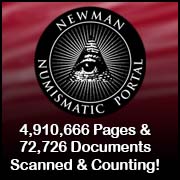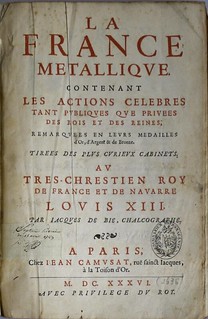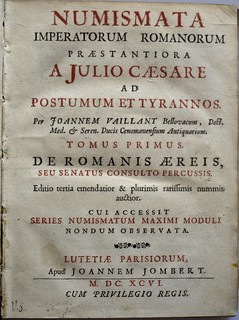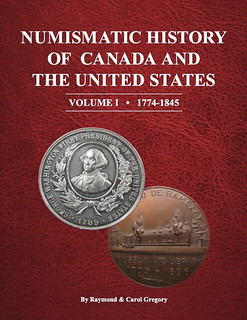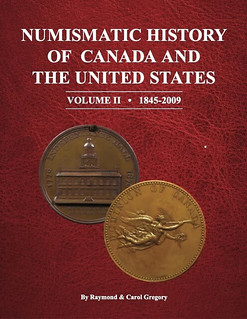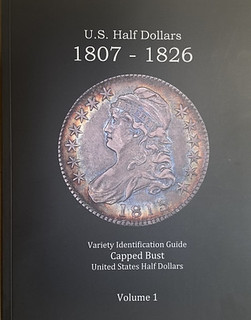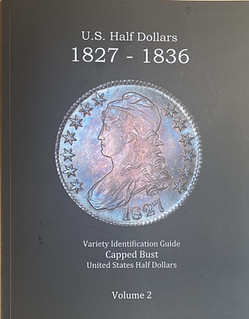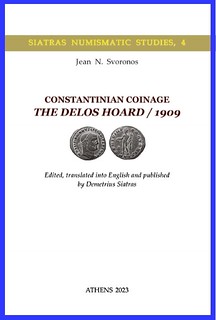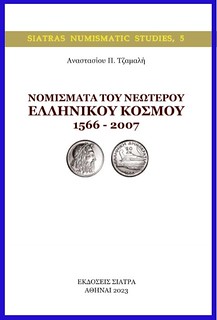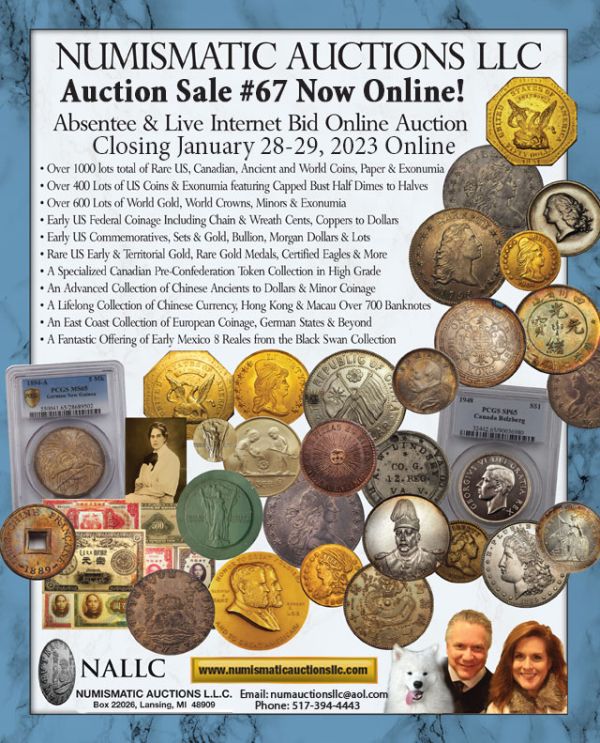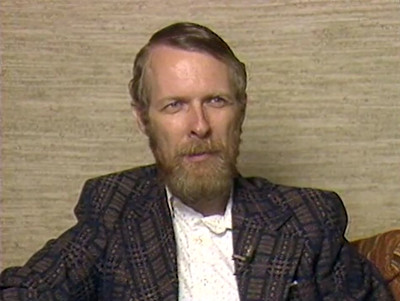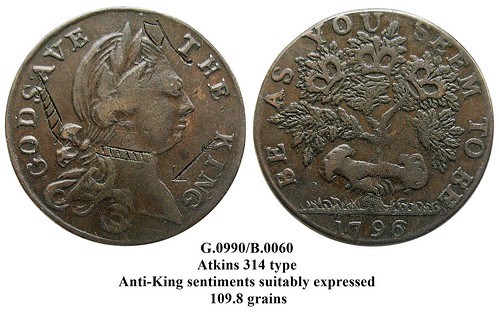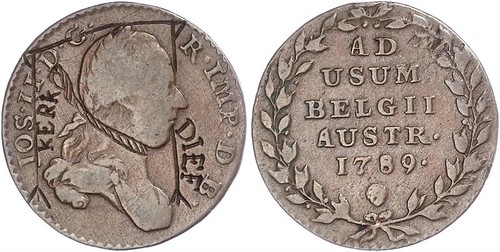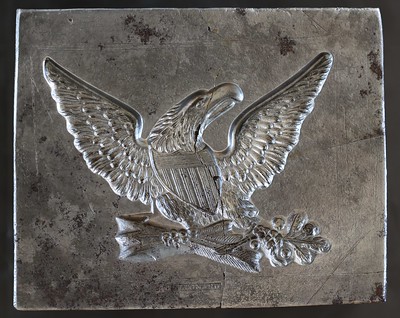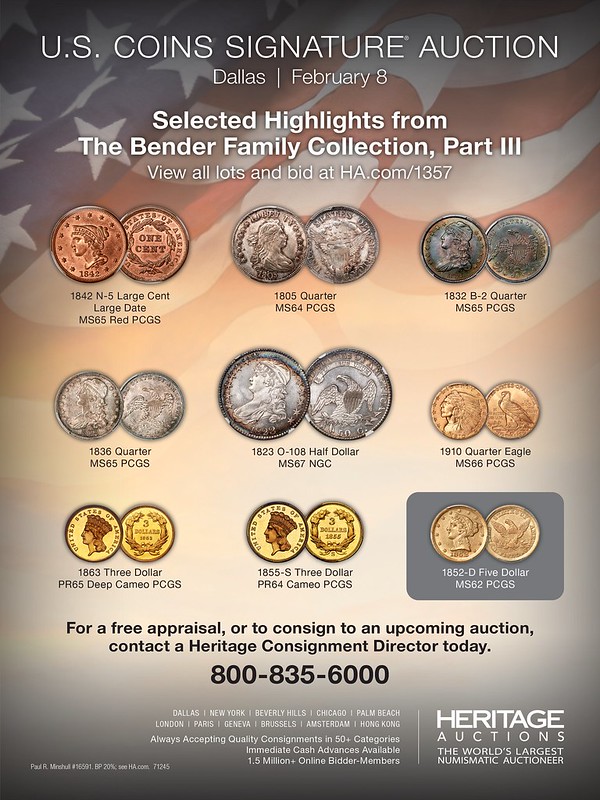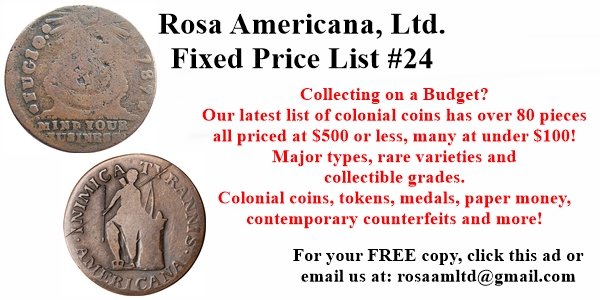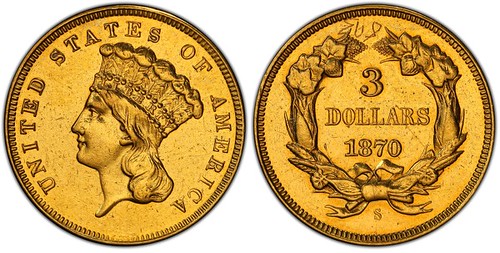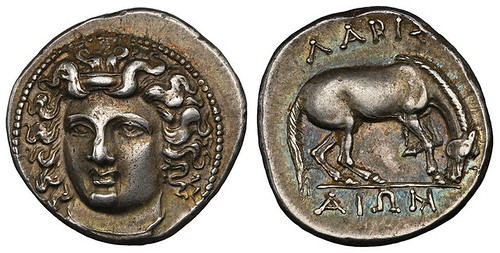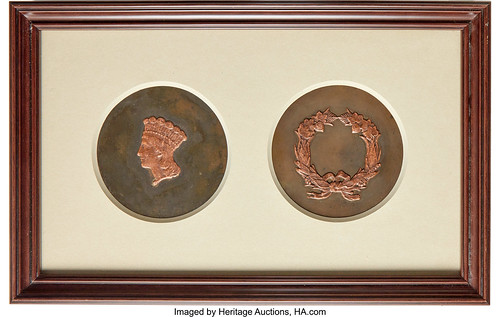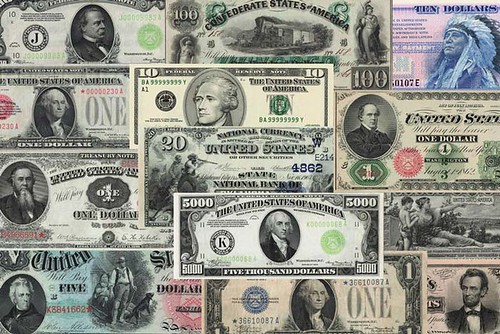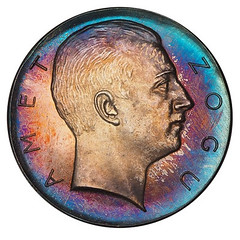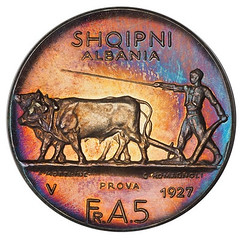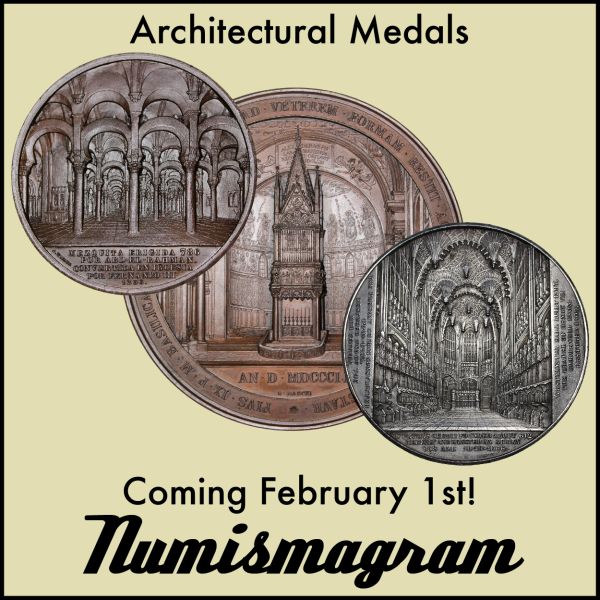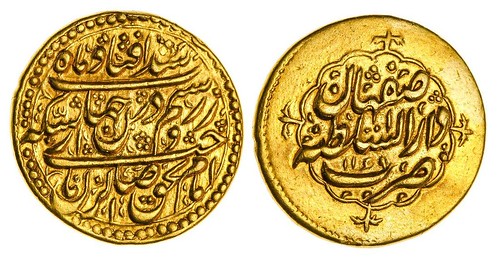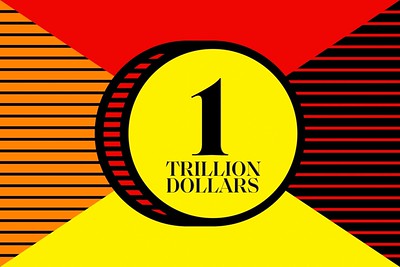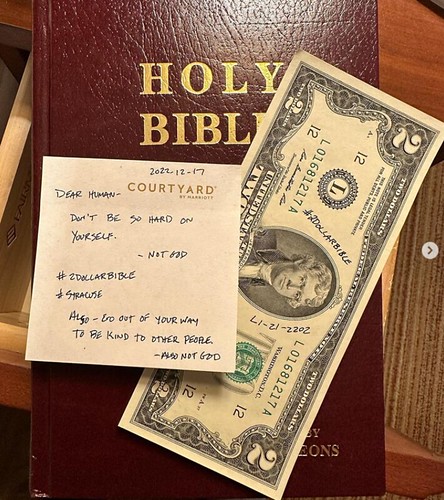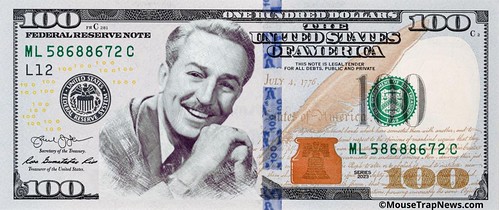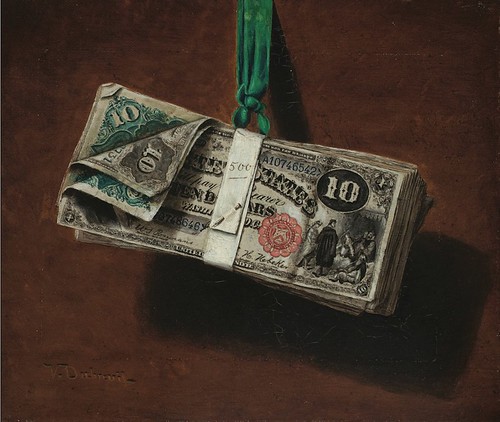
Visit our NBS Sponsors




About UsThe Numismatic Bibliomania Society is a non-profit association devoted to the study and enjoyment of numismatic literature. For more information please see our web site at coinbooks.org SubscriptionsThose wishing to become new E-Sylum subscribers (or wishing to Unsubscribe) can go to the following web page link MembershipThere is a membership application available on the web site Membership Application To join, print the application and return it with your check to the address printed on the application. Print/Digital membership is $40 to addresses in the U.S., and $60 elsewhere. A digital-only membership is available for $25. For those without web access, write to: Charles Heck, Treasurer AsylumFor Asylum mailing address changes and other membership questions, contact Chuck at this email address: treasurer@coinbooks.org SubmissionsTo submit items for publication in The E-Sylum, write to the Editor at this address: whomren@gmail.com BUY THE BOOK BEFORE THE COINSale CalendarWatch here for updates! |
- WAYNE'S WORDS: THE E-SYLUM JANUARY 29, 2023
- KOLBE & FANNING BUY OR BID SALE 20 CLOSING
- MÜNZEN GUT-LYNT LITERATURE AUCTION 9
- NEW BOOK: NUMISMATIC HISTORY OF CANADA AND U.S.
- NEW BOOKS: BUST HALF DOLLAR VARIETY GUIDE
- NEW SIATRAS BOOKS PUBLICATIONS
- BOOK REVIEW: WHEN MONEY TALKS
- BOOK REVIEW: COIN HOARDS AND HOARDING
- BRYCE FRANKLIN DOXZON (1960-2023)
- NNP STORIES FROM WORLD WAR II EXHIBIT
- VIDEO: ROBERT W. JULIAN
- NOTES FROM E-SYLUM READERS: JANUARY 29, 2023
- ENGRAVER ALLEN LEONARD'S WEBSTER VASE
- VOCABULARY TERM: MINT ERROR
- WHAT WAS THE FIRST JUNIOR COIN CLUB?
- THE CELINA COIN COMPANY
- ATLAS NUMISMATICS JANUARY 2023 UPDATE
- LONGACRE HARD WAX MODELS OFFERED
- WORLD BANKNOTE AUCTIONS US SALE 1
- NUMISMATIC AUCTIONS SALE 67 WORLD HIGHLIGHTS
- DAVISSONS AUCTION 42 ANNOUNCED
- NUMISMATIC NUGGETS: JANUARY 29, 2023
- SOUTH KOREA'S NEW ROCKET COINS
- THE MYTHICAL TRILLION-DOLLAR COIN
- OKLAHOMA SENATOR PROMOTES BULLION IDEA
- HOLLAND SOCIETY OF NEW YORK SOUVENIRS
- DICKIN MEDAL FOR BOMB-SNIFFING DOG BASS
- ARGENTINA, BRAZIL COMMON CURRENCY?
- ARGENTINE BANKS RUNNING OUT OF ROOM FOR NOTES
- LEAVING $2 BILLS INSIDE HOTEL BIBLES
- THE WALT DISNEY $100 BILL
- LOOSE CHANGE: JANUARY 29, 2023
- THE MONEY ART OF VICTOR DUBREUIL
Click here to read the thin version on the web
Click here to subscribe
Click here to access the complete archive
To comment or submit articles, reply to whomren@gmail.com
Content presented in The E-Sylum is not necessarily researched or independently fact-checked, and views expressed do not necessarily represent those of the Numismatic Bibliomania Society.
WAYNE'S WORDS: THE E-SYLUM JANUARY 29, 2023
 New subscribers this week include:
Caitlin Smith of the American Numismatic Society.
Welcome aboard!
New subscribers this week include:
Caitlin Smith of the American Numismatic Society.
Welcome aboard!
Thank you for reading The E-Sylum. If you enjoy it, please send me the email addresses of friends you think may enjoy it as well and I'll send them a subscription. Contact me at whomren@gmail.com anytime regarding your subscription, or questions, comments or suggestions about our content.
This week we open with two numismatic literature sales, lots of new books, two reviews, another obituary, updates from the Newman Numismatic Portal, and more.
Other topics this week include lettered-edge bust half dollars, coin hoards, engraver Allen Leonard, mint errors, Junior Coin Clubs, the Celina Coin Co. fixed price and auction offerings, South Korea's rocket coins, trillion-dollar coins, the Holland Society of New York, a new Dickin Medal, two-dollar bills, and the money art of Victor Dubreuil.
To learn more about freaks and fidos, the Rodney Dangerfield of engravers, the Delos hoard, Syracusan medallions, Bryce Doxzon, Robert W. Julian, Ted and Carl Brandts, the Webster Vase, the Madagascar Dollar the Defense of Finland medal, the Walt Disney $100 bill and the Money Dream Pillow's wealth energy, read on. Have a great week, everyone!
Wayne Homren
Editor, The E-Sylum
KOLBE & FANNING BUY OR BID SALE 20 CLOSING
Reminder: Kolbe & Fanning's twentieth "Buy or Bid Sale" closes tomorrow, January 30, 2023. -Editor
Buy or Bid #20 Closes Tomorrow
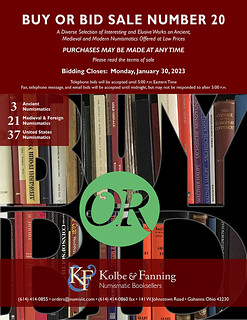 Kolbe & Fanning Numismatic Booksellers have announced our latest
Kolbe & Fanning Numismatic Booksellers have announced our latest Buy or Bid Sale,
which will close tomorrow, Monday, January 30, 2023. With hundreds of new additions, the sale focuses on modestly priced books, giving collectors an opportunity to add to their libraries at minimal cost.
The sale includes over 1400 works on ancient, medieval and modern coins, as well as general works, periodicals and sale catalogues. Buy
prices have been kept low to promote sales. To further encourage participation, the firm is offering free domestic shipping to bidders spending at least $300; there is also no packing and processing fee for this sale. Again, please read the Terms of Sale before participating.
THE BOOK BAZARRE
MÜNZEN GUT-LYNT LITERATURE AUCTION 9
The Germany-based Münzen Gut-Lynt auction house is holding a sale of numismatic literature closing January 29, 2023. Here are some lots that caught my eye. -Editor
Lot 9 DE BIE, J. La France metallique, contenant les actions celebres tant publiques que privees des rois et des reines remarquees en leurs medailles d'or, d'argent et de bronze. Paris 1636. 396 S., 131 Tfn. Ganzledereinband der Zeit, Buchrücken bestoßen. III-II Ex libris "Bibliotheca Magnia. Rothomagensis 1837".
To read the complete lot description, see:
https://auktionen.gut-lynt.de/de-de/lot?$page=1&$maxpagesize=20&$sortby=lot_number&$sortdir=asc&$goto=14385&cat_id=9
Lot 21 VAILLANT, J. Numismata Imperatorum Romanorum Praestantiora. A Julio Caesare ad Postumum usque. Tomus primus. De Romanis Aereis... Paris 1696. Engraving, 256 pages with numerous engravings. Half leather, bumped and content just trimmed. IV-III
To read the complete lot description, see:
https://auktionen.gut-lynt.de/de-de/lot?$page=1&$maxpagesize=100&$sortby=lot_number&$sortdir=asc&$goto=14396&cat_id=9
NEW BOOK: NUMISMATIC HISTORY OF CANADA AND U.S.
Ray and Carol Gregory of Alliston, ON, Canada have published a new two-volume work on the Numismatic History of Canada and the United States. -Editor
Numismatic History of Canada and the United States Vol 1 and Vol 2
Authored By: Raymond Gregory, Carol Gregory
Self-Published: Raymond & Carol Gregory
Price: $189.95 CAD
8.5 x 11 inches glossy softcover)
Pages: Vol 1 448; Vol 2 510
ISBN: 978-1-7782230-0-6
Print Run: 100
Targeted Audience: Numismatist and History Buffs
NEW BOOKS: BUST HALF DOLLAR VARIETY GUIDE
Robert Powers is publishing a series of variety guides for U.S. coins. The latest two volumes cover Lettered Edge Capped Bust Half Dollars and are available through David Kahn Rare Coins. There are priced at $125 plus $5 shipping each. I've seen the books, and the photos are large, beautiful and in full color. Ordering information is below. -Editor
U.S. Capped Bust Half Dollars 1807 - 1826 Variety Identification Guide (Volume I)
U.S. Capped Bust Half Dollars 1827 - 1836 Variety Identification Guide (Volume II)
The primary purpose of this guide is rapid variety identification – while other publications are excellent for inviting in depth home study, this guide is perfect for portability, heavy on-the-go usage, and quick attribution. The author of this book has had a strong interest in Early U.S. coins for over 30 years. He set out to write this series of books because he has wanted to read them for many years, and finally gave up on waiting for someone else to write them. Inside, you will find a comprehensive collection of the highest quality, full color, high resolution modern photos available anywhere, which will make attributing your Capped Bust Half Dollars easier than ever before. Careful attention to detail was considered in the selection of these photos for only those which show the greatest of useful detail in helping with your attribution and die stage recognition.
NEW SIATRAS BOOKS PUBLICATIONS
Bruce Perdue passed along an announcement from Demetrius Siatras of Siatras Books in Athens about a number of new titles on numismatics and sigillography. Thanks. -Editor
BOOK REVIEW: WHEN MONEY TALKS
JP Koning passed along this London Review of Books review of When Money Talks by by Frank L. Holt. Thanks! -Editor
When Money Talks: A History of Coins and Numismatics
by Frank L. Holt.
Oxford, 336 pp., £25.99, October 2021, 978 0 19 751765 9
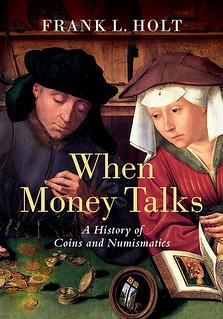 A great deal? remains to be learned, particularly where the technical study of coinage intersects with larger social and economic questions, but the work is hampered by the lowly status of numismatics in contemporary academia. Among the so-called auxiliary sciences of history, only heraldry and genealogy are taken less seriously, still carrying the stigma of antiquarianism from which epigraphy and archaeology long ago liberated themselves. All of these fields stemmed from the curiosity of Renaissance humanists and the collecting mania of noblemen with their Kunstkammern. The first serious studies of ancient coinage, on the Romans by the French humanist Guillaume Budé at the beginning of the 16th century, and on the Greeks by the Austrian Wolfgang Lazius fifty years later, were analytical and remain worth reading. But they were outshone and far outnumbered by essentially compilatory works, the long lists and catalogues that culminated in the work of Joseph Eckhel, another Austrian and curator of the imperial coin cabinet in Vienna. His Doctrina numorum veterum invented some of the classificatory principles with which we still work, for instance the sequence in which Greek coinages are presented in catalogues, clockwise from Spain to India and then back around to North Africa. Although Eckhel's work was a masterpiece, the abiding image of the numismatist was that of the antiquarian worker ant, hoarding details but not very interested in what they meant. Not even Theodor Mommsen could rescue the field, although he managed to place epigraphy at the centre of ancient historical studies.
A great deal? remains to be learned, particularly where the technical study of coinage intersects with larger social and economic questions, but the work is hampered by the lowly status of numismatics in contemporary academia. Among the so-called auxiliary sciences of history, only heraldry and genealogy are taken less seriously, still carrying the stigma of antiquarianism from which epigraphy and archaeology long ago liberated themselves. All of these fields stemmed from the curiosity of Renaissance humanists and the collecting mania of noblemen with their Kunstkammern. The first serious studies of ancient coinage, on the Romans by the French humanist Guillaume Budé at the beginning of the 16th century, and on the Greeks by the Austrian Wolfgang Lazius fifty years later, were analytical and remain worth reading. But they were outshone and far outnumbered by essentially compilatory works, the long lists and catalogues that culminated in the work of Joseph Eckhel, another Austrian and curator of the imperial coin cabinet in Vienna. His Doctrina numorum veterum invented some of the classificatory principles with which we still work, for instance the sequence in which Greek coinages are presented in catalogues, clockwise from Spain to India and then back around to North Africa. Although Eckhel's work was a masterpiece, the abiding image of the numismatist was that of the antiquarian worker ant, hoarding details but not very interested in what they meant. Not even Theodor Mommsen could rescue the field, although he managed to place epigraphy at the centre of ancient historical studies.
BOOK REVIEW: COIN HOARDS AND HOARDING
The London Review of Books article also reviews a new compilation titled Coin Hoards and Hoarding in the Roman World . -Editor
Coin Hoards and Hoarding in the Roman World
edited by Jerome Mairat, Andrew Wilson and Chris Howgego.
Oxford, 368 pp., £90, May 2022, 978 0 19 886638 1
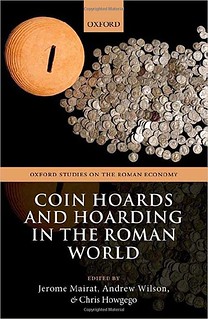 However valuable the information ancient coins provide as individual artefacts, even more valuable is what they teach us in the aggregate. A hoard can be defined as two or more coins deposited together, usually but not always intentionally, and not subsequently recovered. Since a hoard's owner usually intended to retrieve it, the non-recovery acts as proxy evidence for its historical circumstances. Broadly speaking, there are four categories of hoard, each defined by the way it was created: accidental loss, sudden response to an emergency, storage of savings, or deliberate abandonment. Each tells us different things. Accidental hoards are things like dropped purses, or the basket of coins discovered on the docks of Herculaneum, now a fused mass of bronze and silver bearing the imprint of the container that was incinerated along with its owner in the pyroclastic surge of Vesuvius. Emergency hoards are what they sound like: collections secreted to prevent discovery in a moment of crisis, often war or the threat of it. Savings hoards are surplus wealth kept in hidden reserve by their owner. Finally, there are deliberately abandoned hoards, such as grave deposits, sacrifices and votive offerings. Each type reveals different things. Accidental and emergency hoards can be dated, usually closely, by the youngest coin they contain, and offer a snapshot of the currency circulating in a particular place at a particular time. Savings hoards represent deliberate selection over time. This generally means higher rather than lower value coins, and better quality specimens, whether measured by weight, level of wear, or precious metal content. These hoards are harder to date, because their youngest coin may come from long before the time of deposition. For that reason, they don't provide a snapshot of monetary history, but they do reveal social choices about relative monetary values and economic decision-making. Finally, abandoned deposits represent another kind of deliberate selection, and were more likely to contain demonetised pieces which were no longer usable as currency.
However valuable the information ancient coins provide as individual artefacts, even more valuable is what they teach us in the aggregate. A hoard can be defined as two or more coins deposited together, usually but not always intentionally, and not subsequently recovered. Since a hoard's owner usually intended to retrieve it, the non-recovery acts as proxy evidence for its historical circumstances. Broadly speaking, there are four categories of hoard, each defined by the way it was created: accidental loss, sudden response to an emergency, storage of savings, or deliberate abandonment. Each tells us different things. Accidental hoards are things like dropped purses, or the basket of coins discovered on the docks of Herculaneum, now a fused mass of bronze and silver bearing the imprint of the container that was incinerated along with its owner in the pyroclastic surge of Vesuvius. Emergency hoards are what they sound like: collections secreted to prevent discovery in a moment of crisis, often war or the threat of it. Savings hoards are surplus wealth kept in hidden reserve by their owner. Finally, there are deliberately abandoned hoards, such as grave deposits, sacrifices and votive offerings. Each type reveals different things. Accidental and emergency hoards can be dated, usually closely, by the youngest coin they contain, and offer a snapshot of the currency circulating in a particular place at a particular time. Savings hoards represent deliberate selection over time. This generally means higher rather than lower value coins, and better quality specimens, whether measured by weight, level of wear, or precious metal content. These hoards are harder to date, because their youngest coin may come from long before the time of deposition. For that reason, they don't provide a snapshot of monetary history, but they do reveal social choices about relative monetary values and economic decision-making. Finally, abandoned deposits represent another kind of deliberate selection, and were more likely to contain demonetised pieces which were no longer usable as currency.
BRYCE FRANKLIN DOXZON (1960-2023)
I was sorry to learn this week of the passing of Bryce Doxzon, a longtime familiar face on the coin show circuit, active for years as an exhibitor and judge. -Editor
 Born March 16, 1960, Bryce Franklin Doxzon passed away on New Year's morn as a result of a 3-year battle with ALS. He was a most brave & courageous fighter.
Born March 16, 1960, Bryce Franklin Doxzon passed away on New Year's morn as a result of a 3-year battle with ALS. He was a most brave & courageous fighter.
He is survived by: brother Kent, sister-in-law Debbie, niece Emily, nephew Sam; sister, Claire Simpson; brother Glenn. He is pre-deceased by his parents, Rita Mueller Doxzon & Roland Franklin Doxzon, of Catonsville.
While outwardly characterized as rather quiet & subdued, Bryce was a very loving & devoted person passionately involved in many organizations & groups as well as his family.
NNP STORIES FROM WORLD WAR II EXHIBIT
The latest additions to the Newman Numismatic Portal are images from Washington University's Olin Library's Stories from World War II exhibit. Project Coordinator Len Augsburger provided the following report. -Editor
Stories from World War II Exhibit Images on Newman Portal
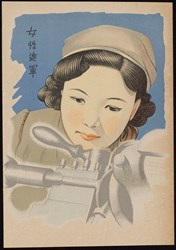 In June, 2022 we mounted a World War II exhibit at Washington University's Olin Library, Stories from World War II, focusing on the letters of Walter M. Goldschmidt, a German-born American who served under the Allies. Included in the exhibit was a selection of World War II concentration and internment camp money, loaned by Steve & Ray Feller, and a number of war bonds from the collection of Joe Boling. This material is now imaged and viewable on Newman Portal. Newman Portal acknowledges Steve & Ray Feller and Joe Boling for their contributions to this exhibit.
In June, 2022 we mounted a World War II exhibit at Washington University's Olin Library, Stories from World War II, focusing on the letters of Walter M. Goldschmidt, a German-born American who served under the Allies. Included in the exhibit was a selection of World War II concentration and internment camp money, loaned by Steve & Ray Feller, and a number of war bonds from the collection of Joe Boling. This material is now imaged and viewable on Newman Portal. Newman Portal acknowledges Steve & Ray Feller and Joe Boling for their contributions to this exhibit.
Image: Josei shingun poster (6x8.75") of Japanese female war worker, from the Joseph Boling collection
VIDEO: ROBERT W. JULIAN
The David Lisot Video Library on the Newman Numismatic Portal can be found at:
https://nnp.wustl.edu/library/multimediadetail/522852
We highlight one of his videos each week in The E-Sylum. Here's one from 1986 interviewing author and researcher Bob Julian. -Editor
NOTES FROM E-SYLUM READERS: JANUARY 29, 2023
Another Anti-King Engraved Coin
Jeff Rock writes:
"Sadly still a bit behind in my E-Sylum reading, but wanted to note that Joseph II of Belgium was not the only king not loved by his people, and with that sentiment engraved on a coin. This British evasion copper, struck around 1796-8, has poor Joseph's death on the gallows beat quite handily - George III has a noose around his neck, an arrow ready to pierce his chest and, for good measure, an axe ready to hit him in the forehead! While evasions didn't circulate in America (contrary to the opinion of some 19th century numismatists!), they did circulate in England and Ireland, and whoever engraved this one was clearly no fan of George!"
Great piece! Thanks. Here's the Joseph II piece we discussed earlier. -Editor
To read the earlier E-Sylum article, see:
NUMISMATIC NUGGETS: JANUARY 1, 2023 : Altered 1789 Coin: Joseph II on the Gallows
(https://www.coinbooks.org/v26/esylum_v26n01a21.html)
Other topics this week include Coins Struck With False Dies and the Woodward Sale #27 Supplement. -Editor
THE BOOK BAZARRE
100 Greatestlibrary. Presented chronologically as a richly illustrated historical narrative of Canadian numismatics. 160 pages, coffee-table, hardcover. Order your copy online at Whitman.com , or call 1-800-546-2995.
ENGRAVER ALLEN LEONARD'S WEBSTER VASE
Heath White has been researching the career of engraver Allen Leonard, and he provided this chronicle of his work correcting a 180-year-old attribution error. Thanks! -Editor
I started researching Allen Leonard a few weeks ago because two of the dies in my collection were engraved by him. One of the articles I found that mentioned him was in Longacre's Ledger (found on NNP) and it was an excerpt from a book titled, "1849: The Mint Strikes Gold."
VOCABULARY TERM: MINT ERROR
Here's another entry from Dick Johnson's Encyclopedia of Coin and Medal Terminology. -Editor
Mint Error. A malformed piece produced at a mint. Mint error coins are those that are not perfect but which have been issued along with perfect, production run pieces. Any struck item which is an anomaly – and the number of things that can go wrong in coin and medal production is great – can be classed as a mint error. The term was formerly called freaks or fidos (for Freaks, Irregulars, Defects and Oddities); currently numismatic writers prefer mint error, error coins or even numismatic errors.
WHAT WAS THE FIRST JUNIOR COIN CLUB?
E-Sylum Feature Writer and American Numismatic Biographies author Pete Smith submitted this article on Junior Coin Clubs. Thanks! -Editor
This week I worked on revising the history for my local coin club, the Northwest Coin Club. I came across a clipping that claimed credit for formation of the first junior coin club. I wonder if that claim is correct.
THE CELINA COIN COMPANY
The Daily Standard of Celina, Ohio published a story about the local Celina Coin Co., its owners, and the ultrarare coins they handled. -Editor
One of the rarest and most famous U.S. gold coins ever made was once in the hands of two Celina businessmen.
John Sacher, a Celina attorney and coin expert, during the Western Ohio Civil War Roundtable on Thursday spoke about the $10 million 1870-S $3 gold coin, the coin's connection to Celina Coin Co. and its temporary owners Ted and Carl Brandts.
ATLAS NUMISMATICS JANUARY 2023 UPDATE
Atlas Numismatics has updated their website with 595 new coins, medals, and tokens at fixed prices. Selections include the following items. Nice coins (and a medal)! -Editor
LONGACRE HARD WAX MODELS OFFERED
In their upcoming February 2023 Long Beach Expo sale, Heritage is offering an amazing piece of U.S. numismatic history - two original hard wax models created by engraver James Longacre for gold coinage. -Editor
Original Wax Engravings on Copper Disks. This renowned, framed set of original James B. Longacre wax models is both aesthetically pleasing and numismatically important. Intricately rendered by Longacre's hand, the wax models represent an early step in the mid-1850s die making process, where they were critical to both the creative design and the successful completion of satisfactory steel hubs. Longacre was a deliberate engraver and always meticulous in his work. The wax models allowed him to finalize his initial sketches, creating three-dimensional wax motifs that were several inches in diameter -- much larger than their final size, and an essential requirement for ease in workmanship.
WORLD BANKNOTE AUCTIONS US SALE 1
Here's the press release for World Banknote Auctions' first U.S. currency sale. -Editor
World Banknote Auctions is excited to announce its upcoming US Currency Sale 1, featuring a wide range of rare and collectible banknotes from the United States. The auction will take place on February 24 on the firm's website and will feature notes from the colonial era to modern times, including scarce large-size notes, fractional currency, and error notes.
NUMISMATIC AUCTIONS SALE 67 WORLD HIGHLIGHTS
Here are some highlights from Auction 67 Session II from Numismatic Auctions LLC. -Editor
Lot 565: Albania. Prova 5 Franga Ari, 1927-V. As KM-Pr22 yet a 22.8g collector copy/restrike. Beautiful violet, blue and golden toned mirror Proof. An affordable and stunning high grade space filler and study piece to help educate the collector of this series from mistaking one like this as an original. ($100+)
DAVISSONS AUCTION 42 ANNOUNCED
In an email to clients this week, Allan Davisson announced his firm's upcoming auction sale. -Editor
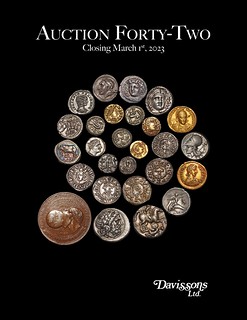 Auction 42, closing Wednesday, March 1st 2023, is online now! Print copies are being sent next week, if you are not on our mailing list and would like a copy please let us know.
Auction 42, closing Wednesday, March 1st 2023, is online now! Print copies are being sent next week, if you are not on our mailing list and would like a copy please let us know.
The fifty-five Anglo-Saxon lots in this sale represent a major offering in this series, and are the heart of the collection formed by Patrick Zabel, a committed and scholarly collector who was active in the latter part of the 20th century. That was a time when metal detectors were bringing finds to the market helping to make this historic series accessible to a broader range of collectors than had been possible a few decades earlier. The pieces offered here include three gold thrymsas, an impressive run of high grade and rare sceats, as well as pennies representing twenty-four different rulers or issuers of Anglo-Saxon pennies.
NUMISMATIC NUGGETS: JANUARY 29, 2023
Here's a selection of interesting or unusual items I came across in the marketplace this week. Tell us what you think of some of these. -Editor
Iran. Zand. Karim Khan (AH 1166-1193/ 1753-1779 AD). Gold Mohur, Dar al-Sultana Isfahan AH 1169. 10.8 gm. Zand couplet, rev. Mint, epithet and date within fancy cartouche with four outer fleurs. The superb strike and rarity of this type suggests that it was intended mainly for donative purposes. A.2787. Extremely rare, especially as most of the known examples of this type are from the mint of Shiraz. Choice Extremely Fine.
Interesting, attractive piece. I don;t believe I've seen one of these before. From the SPINK January 30, 2023 auction. -Editor
To read the complete lot description, see:
IRAN. ZAND. KARIM KHAN (AH 1166-1193/ 1753-1779 AD). GOLD MOHUR, DAR AL-SULTANA ISFAHAN AH 116...
(https://live.spink.com/lots/view/4-8LJRU9/iran-zand-karim-khan-ah-1166-1193-1753-1779-ad-gold-mohur-dar-al-sultana-isfahan-ah-116)
Other topics this week include an Encased Good Luck Indian Cent, the 1939 Defense of Finland Medal, and the Celluloid Starch Company Token. -Editor
SOUTH KOREA'S NEW ROCKET COINS
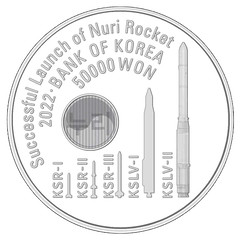
Author Mark Lovmo passed along this information about South Korea's new rocket coins. Thanks. Here's the common reverse. -Editor
South Korea has issued new coins to commemorate the successful launch of the country's first domestically built space rocket on June 21, 2022.
THE MYTHICAL TRILLION-DOLLAR COIN
The idea of a trillion-dollar coin has popped up again as the U.S. Congress opens another amusing-not-amusing Kabuki theater debt-ceiling dance. Aaron Oppenheim passed along this article. -Editor
As the debt ceiling debate takes over the headlines in the U.S., so is the idea of minting a $1 trillion platinum coin, which is a surprising option available to the Treasury Department to raise the debt ceiling without bipartisan support.
OKLAHOMA SENATOR PROMOTES BULLION IDEA
Meanwhile, some state legislatures continue to dabble with the idea of bullion-based exchange. -Editor
A bill filed in the Oklahoma Senate would establish a state bullion depository. This would not only create a safe place to store precious metals; it also has the potential to facilitate the everyday use of gold and silver in financial transactions in Oklahoma and set the stage to undermine the Federal Reserve's monopoly on money.
Sen. Nathan Dahm (R) filed Senate Bill 816 (SB816). The legislation would create the Oklahoma Bullion Depository in the Office of the State Treasurer. The depository would serve as the custodian, guardian and administrator of gold, silver and other precious metals transferred or acquired by the state, or an agency, political subdivision or other instrumentality of the state.
The depository would also accept deposits of gold and silver by private individuals.
HOLLAND SOCIETY OF NEW YORK SOUVENIRS
Harry Waterson published an article in the Summer 2022 issue of de Halve Maen (The Half Moon), the "Magazine of the Dutch Colonial Period in America" published by The Holland Society of New York. With permission, here's an excerpt. -Editor
The men who made
up the Holland Society of New York would have liked it better had it been called the Holland Society of New Amsterdam.
The Holland Society of New York (HSNY) was organized in 1885. On April 30th a constitution was adopted, and the next day
the Society was incorporated in the State of New York. The purpose of the Society was to collect and preserve information
respecting the early history and settlement of New Netherland by the Dutch, and to discover, collect, and preserve all existing
documents, etc., relating to their genealogy and history.
Membership was limited to 1,000 men, all direct descendants through the male line of a Dutchman who was a native or resident of New York or of the American colonies prior to 1675. It was 2016 before women were admitted to full membership in the Society.
On March 30, 1887, a special committee presented a badge design to the trustees. The design was based on ancient geuzenpen-ningen (Beggars' Medal
) derived from plasters procured from originals in the Museum of Antiquities of Amsterdam, Holland.
DICKIN MEDAL FOR BOMB-SNIFFING DOG BASS
A U.S. Marines bomb-sniffing dog is the latest winner of the Dickin Medal. -Editor
A brave sniffer dog who saved multiple lives from Taliban bombs has been awarded the animal version of the Victoria Cross.
Bass, a Belgian Shepherd, served in the US Marine Corps.
He has now become the 75th animal to win the PDSA's Dickin Medal – the highest accolade any animal can receive while serving in the military.
Bass spent six years in the US Marine Special Operation Command and conducted more than 350 explosive sweeps in 46 missions in Afghanistan, Iraq and Somalia.
ARGENTINA, BRAZIL COMMON CURRENCY?
Pablo Hoffman writes:
"The intriguing possibility of a completely new family of currency is under discussion."
Pablo Hoffman forwarded a Financial Times article which proved difficult to excerpt. Here are a couple related articles on the topic. Stay tuned - perhaps there are new banknotes in the future. -Editor
 Argentina and Brazil will begin preparations to create a common currency, Argentina's economy minister has said. Sergio Massa said that the two countries would soon decide to start
Argentina and Brazil will begin preparations to create a common currency, Argentina's economy minister has said. Sergio Massa said that the two countries would soon decide to start studying the parameters needed for a common currency
. Massa said the currency would initially be a joint Argentine-Brazilian endeavour, which other Latin American countries could later adopt.
ARGENTINE BANKS RUNNING OUT OF ROOM FOR NOTES
Speaking of Argentina, Dick Hanscom passed along this article about Argentine banks running out of room for the country's deprecated banknotes. -Editor
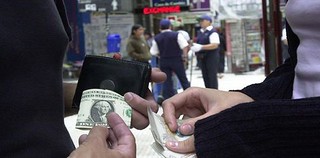 Boasting to be the second largest economy in South America behind Brazil, Argentina currently owes US$40 billion to the IMF, with inflation close to 100%, almost 40% of its population living under the poverty line and 60% of minors hungry or undernourished.
Boasting to be the second largest economy in South America behind Brazil, Argentina currently owes US$40 billion to the IMF, with inflation close to 100%, almost 40% of its population living under the poverty line and 60% of minors hungry or undernourished.
Besides the hard times for the people, this also has practical issues for the financial system, Argentina's largest denomination banknote – 1,000 pesos – is currently worth about US$ 5.40 on official exchanges, but barely reached US$ 2.65 when valued at real-world exchange rates currently.
LEAVING $2 BILLS INSIDE HOTEL BIBLES
Two dollar bills are fun - they're different and eye-catching. We've run any number of articles about people using twos. Here's one about someone leaving them in hotel bibles. -Editor
Check out this Instagram hashtag: #2dollarbible. You'll find photos of $2 bills next to hotel room bibles.
THE WALT DISNEY $100 BILL
In the duuuh-yes-this-is-satire department, an article declares that Walt Disney's image will soon grace the $100 bill. -Editor
The $100 bill is by far the most popular currency denomination in America. It's not the most commonly used bill, however it consistently ranks as America's favorite bill. Oftentimes people call them Benjamins
or Bennys
after Benjamin Franklin, who is featured on the $100 bill. However, in 2023, there will be a new face on the front of the $100 bill and a new back to it as well.
LOOSE CHANGE: JANUARY 29, 2023
Here are some additional items in the media this week that may be of interest. -Editor
Greg Reynolds published an article in the Greysheet about the unique 1870-S Half Dime. -Editor
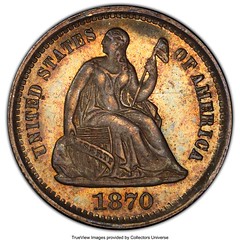 On January 11, the unique 1870-S half dime realized $3,120,000. Incredibly, the only three privately owned, unique U.S. coins were all in the same FUN auction extravaganza, from three different consignors.
On January 11, the unique 1870-S half dime realized $3,120,000. Incredibly, the only three privately owned, unique U.S. coins were all in the same FUN auction extravaganza, from three different consignors.
A coin is unique if only one is known in the present. The discovery of the unique 1870-S half dime during the late 1970s was a shock to the coin community. Research by Nancy Oliver and Richard Kelly has since demonstrated that San Francisco Mint officials made preparations and filed paperwork for coins of all then current denominations to be struck and placed in a cornerstone of the San Francisco Mint in 1870. In 1978, however, few coin collectors thought that an 1870-S half dime existed. An 1870-S quarter has never emerged.
To read the complete article, see:
Tom Bender's Collection, Review Part 3: Unique 1870-S Half Dime
(https://www.greysheet.com/news/story/tom-bender-s-collection-review-part-3-unique-1870-s-half-dime)
Other topics this week include the 1958 Doubled Die Cent, and the Money Dream Pillow. -Editor
THE MONEY ART OF VICTOR DUBREUIL
Pablo Hoffman passed along a great article on the money art of Victor Dubreuil. Thank you. Here's an excerpt. -Editor
After supposedly stealing 500,000 francs from his bank, the mysterious Victor Dubreuil (b. 1842) turned up penniless in the United States and began to paint dazzling trompe l'oeil images of dollar bills. Once associated with counterfeiting and subject to seizures by the Treasury Department, these artworks are evaluated anew by Dorinda Evans, who considers Dubreuil's unique anti-capitalist visions among the most daring and socially critical of his time.

